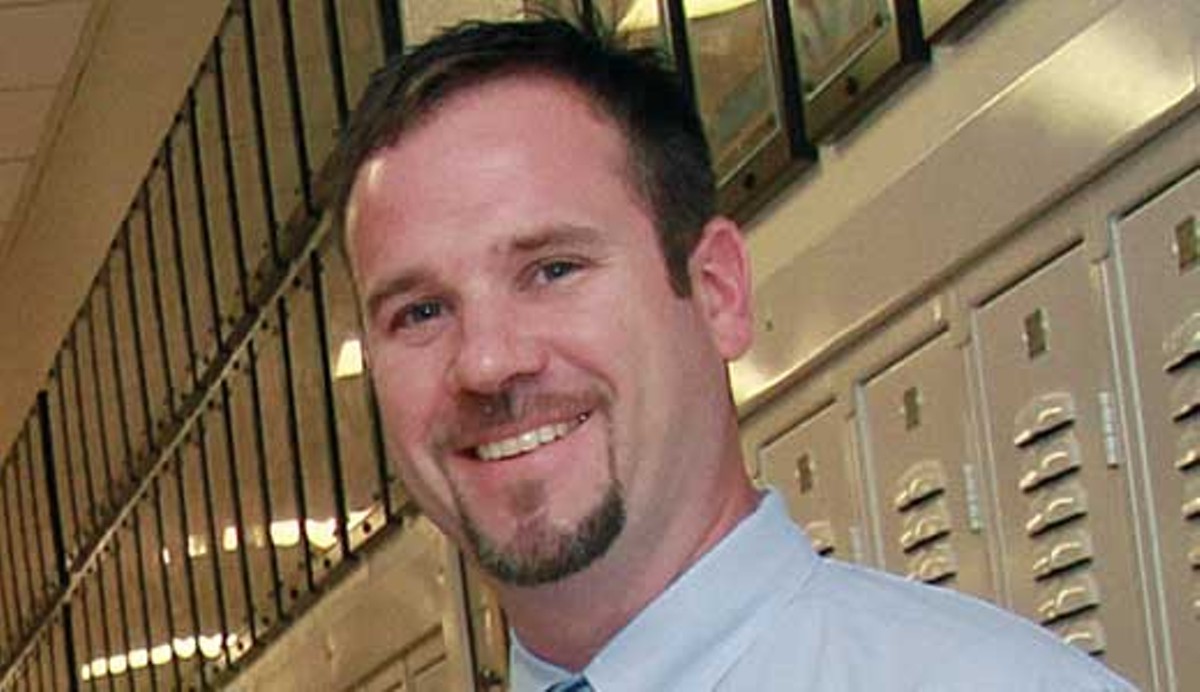For the second year in a row, Jefferson County schools labeled “persistently low achieving” have been restaffed. These seven public schools — now cresting a turbulent few months of replacing principals, as well as half their staffs — are heading into a new year, in theory, stronger.
Under the $3.5 billion federal School Improvement Grant program, an experiment in prescriptive reform, Jefferson County Public Schools had to select one of four “transformation” models for its persistently low-achieving schools. For JCPS, restaffing was the chosen model. (We’ll get into the other three later.)
Teachers asked to leave low-performing schools are not fired. Instead, a juggling act ensues, with the district shifting teachers to different schools. A large component of restaffing involves transfers — bodies traded from building to building.
Unflattering phrases have cropped up about this phenomenon: Pass the Trash. The Lemon Dance. The Turkey Trot.
But in truth, teachers who are transferred are not necessarily bad or ineffective. Jefferson County Teachers Association President Brent McKim cringes at the notion of teachers as trash. He says restaffing is all about finding a better “fit” for teachers, and that in the end, when a school breaks up with staff, they land in the arms of a more proper suitor — an educational Match.com.
Sound too tidy? Principals and teachers in the trenches say restaffing has its benefits. And when coupled with the up to $2 million per year that comes from the School Improvement Grant program, transformation could happen.
The stakes are very real. Most of the low-performers are high schools with large percentages of at-risk youth who have been behind their more privileged peers for years. If things don’t improve, students will continue to head into an economy cruel to the poorly educated, further congesting their lives with hardship.
At Iroquois High School, a persistently low-achieving school, only 15 percent of its students were proficient or advanced in math, 38 percent in reading, based on 2009-2010 test scores. In comparison, during that same academic year, 72 percent of students statewide tested sufficiently in reading, 64 percent in math.
With school set to begin next week, there’s a new sense of urgency among the district’s latest group of low-performing schools: Doss, Fairdale, Iroquois, Seneca, Southern and Waggener high schools and Knight Middle School. New teachers have stepped in to fill 149 positions vacated as part of the restaffing overhaul. Although some experienced teachers have jumped over to low-performing schools, a July Courier-Journal article indicated 40 percent of the restaffed positions are filled by teachers with no experience.
And while administrators maintain morale is improving in the wake of teachers being bounced around, problems have surfaced as a result of restaffing. Over the past few months, questions have risen as to whether the district is abiding by the U.S. Department of Education’s restaffing guidelines. U.S. Secretary of Education Arne Duncan modeled the School Improvement Grant program off of his work as CEO of Chicago Public Schools. Its goal is to resuscitate ailing schools with money, the appointment of strong leaders and the freedom to let those leaders recruit a transformation team.
In theory, principals should have total freedom to make hiring decisions. At some low-achieving schools in Jefferson County, however, it appears that hasn’t always been the case.
Below are three perspectives from those in the JCPS restaffing regiment.
The man in charge
Dewey Hensley wasn’t looking for a job when the Kentucky Department of Education called. He loved being principal at J.B. Atkinson’s Academy for Excellence in Teaching and Learning. But his reputation as a dynamic, successful reformer at that struggling Portland school earned him an influential post. He’s head of the newly formed District 180, an office dedicated to overseeing the state’s low-performing schools, saturating them with professional development, social services and support. (See story on page 13 for more on his new post.)
He started July 1 and is already trying to clean up potentially sloppy policy — courtesy of JCPS.
School Improvement Grants last for three years, and schools are expected to make major gains in that time. If districts choose the restaffing model, federal guidelines suggest principals at low-performing schools have total flexibility when deciding who they want in their building to transform their school. In other words, for three years, the local teachers union should be hands off, unable to enforce seniority and transfer policies that protect teachers and dictate who and how principals hire.
According to Hensley, if persistently low-achieving schools are hamstrung by rigid contractual obligations, the district could lose its School Improvement Grant funding as that violates the initiative’s intent.
Notice the language. Should not enforce. Could lose funding. The federal guidelines are foggy, perfect for a district to find gray areas to exploit.
Hensley says districts should intuitively give principals freedom.
“You kind of count on a school district to want to turn around a school and not place an insufficient person in the school if they’re trying to turn things around,” he says. “I understand the federal guidelines are not regimented … It’s like, they don’t remind them to breathe, either.”
Lately, though, Hensley has fielded concerns that the district is placing staff in low-performing schools. Sources also tell LEO that when vacancies pop up, rather than allowing principals to seek a replacement, the district has, in a few cases, either pressured principals or gone ahead and placed teachers. That’s not unusual, but low-performing schools thought they were exempt from this practice.
These placed teachers come via two paths. Often teachers voluntarily want to relocate and give their top five choices. They’re put on a list at their preferred schools and ranked according to seniority.
Then there are the “overstaffed” teachers. They’ve involuntarily left a school and now seek a position elsewhere. They can list as many as 15 schools. Again, not all of them are ineffective, but it’s quite possible they’re not a principal’s first choice. Regardless, each principal gets a list in late spring with teachers who’ve indicated interest in their school. Principals are then supposed to interview and select among the three most senior candidates. This transfer window lasts from late April until the middle of June.
After that window closes, the district maintains an “overstaff” list of teachers not yet placed. When a principal calls the district saying they need, for example, a math teacher, someone from that overstaff list can be sent their way.
This protocol has not been mandated at the seven schools recently deemed low performing. However, the first group of six JCPS schools deemed low achieving — now headed into their second year of the grant — reportedly experienced difficulty with remaining exempt from this routine.
LEO contacted all six schools in that first group, one being the Academy at Shawnee.
When LEO asked Keith Look, the principal, if he’d had total control of his hires for the 2011-2012 school year, he said only, “I did not have the level of autonomy afforded to me last year.”
After thorough research, Hensley originally stated that he believes the district had “moved back into the contractual requirements placed on schools.”
LEO contacted Kentucky Department of Education Commissioner Terry Holliday for his take, and was directed back to Hensley, who then said he wasn’t so sure anymore what was going on, citing a lot of contradictory information from the district and schools. He says he’ll take it up with the new superintendent for JCPS, Donna Hargens, this week.
“I’m still not in the guts of everything,” he says. “But boy, I will be now.”
The human resources director for JCPS, Bill Eckels, denies instituting any directives on persistently low-achieving schools.
“The principals were asked to look at their overstaff list and transfer list,” he says. “I made it quite clear that they did not have to take anyone.”
Eckels points to an agreement (not legally binding) between the Jefferson County Board of Education and Jefferson County Teachers Association that was passed in June. It states, in part:
“Any school identified as ‘Persistently Low Achieving’ by the Kentucky Department of Education will be exempt for the federal SIG grant period of three years from any requirements … that mandate placement of voluntary and overstaffed employees.”
This isn’t the first time confusion and conflict have risen from the restaffing model. Earlier this year, according to Hensley, there was a “misunderstanding” among principals of several persistently low-achieving schools wherein they briefly thought they too had to hire from the “overstaff” list.
And earlier this year, as reported by The Courier-Journal in April, Commissioner Holliday raised concerns that too few teachers were being replaced in the low-performing schools, and that of the new hires, too many lacked experience.
When new test scores come out in the fall, additional Jefferson County schools will likely be deemed persistently low achieving, and Hensley wonders if JCPS will stick with the restaffing model. After all, common sense suggests that after a few years of shuffling, the best teachers will have found places that need them.
So what are the other options? 1) Closing schools — unlikely to ever happen. 2) Allowing a charter or some other outside agency to come in and manage the struggling school — also unlikely in a state resistant to charters. 3) The transformation model. In this, the principal would receive extra money. Professional development for teachers would be structured into the school. Then, (and so far this is the deal-breaker in JCPS) teacher evaluations and pay would be tied, in part, to the academic growth of students.
None of these are a panacea. But according to a 2010 Education Week article, the transformation model is by far the most popular across the country and is considered the least disruptive.
JCPS Board of Education Chairman Stephen Imhoff says there are too many unanswered questions about this model, but he’s open to considering it.
“I don’t think any other Kentucky districts have used it,” he says.
Actually, nine other school districts involved in the School Improvement Grant program in Kentucky have opted for transformation. Jefferson County Teachers Association spokesman Brent McKim is advocating for a fifth option, the “investment model.” It’s essentially the transformation model without any built-in accountability. He has sent a letter to the U.S. Department of Education and Kentucky Department of Education.
Dewey Hensley is aware of it.
“That’s a very difficult thing,” Hensley says. “There’s really nothing to that to ensure that the necessary steps are taken to match the neediest kids with the best teachers. Nearly everyone agrees that’s the most important step.”
And at least for now, Hensley is not convinced restaffing alone achieves that in JCPS.
The new principal
It may be summer but Chris Perkins still walks into his Iroquois High School office by 6:30 a.m. Long, busy days are nothing new. So much else is — his staff, his new position as principal, and the official label of persistently low-achieving school. Low math and reading test scores earned Iroquois a spot on that list in March. Perkins, sitting in his sleepy school, says he’s buoyed by the hope that’s ushered in on the clean slate of a new academic year.
He points to a gray school T-shirt hanging behind him with big block letters that read: BELIEVE.
“Believe,” he says. “That’s our motto this year.”
Perkins has been a teacher and administrator for more than a decade. Various iterations of education reform preceded his time in the profession, but the last few years have been particularly frenzied, charged by a hyper-focus on test scores and polarizing rhetoric about the best ways to change schools.
He knows there’s no magic solution. And he knows a big challenge lies ahead. He must improve Iroquois’ student performance at a time when new standards and testing will make that a lot tougher.
But he’ll have help, including a trio of education specialists provided by the state. Perkins and the pricipals of six other recently named persistently low-achieving schools have also applied for an extra $15.1 million in grants to fund other innovations, like a summer enrichment program for incoming freshmen. The hope is that extra study will enhance math and reading skills.
Perkins is still getting comfortable in his new role, though it was hardly ticker tape and cake when he learned of the promotion. He had been working as an assistant principal for five years when the state unseated Iroquois’ old principal, Joey Riddle, before the 2010-2011 school year was even over.
“People really loved working for him. I did,” he says. “It’s unfortunate what happened.” Perkins knew this time last year that his school, with its low test scores, would likely end up on the low-achieving list. He remembers the three-day audit well — a team of roughly 10 people interviewing everyone from administrators to custodians and sitting in on classes.
He says transferring teachers felt like the sour end to a promising relationship. “You know, telling them it’s not you, it’s me.”
Because Iroquois had replaced 42 percent of its staff a year earlier, Perkins only had to replace 8 percent of his staff. Of the 27 teachers he hired, about half are inexperienced. But, he says, that’s adding much-needed energy.
Being in a school that’s constantly categorized as bad takes its toll on teachers. He hopes enthusiastic people hell-bent on changing the world will encourage students and create a positive environment at Iroquois.
Perkins is confident that this year his teachers will prove they’re just as good as those at JCPS gems like Male and Manual. It will help that the state’s now using a more comprehensive equation to judge schools that includes academic student growth, not just the number of kids who reach certain education benchmarks. He says while restaffing was painful at first, the fresh start feels promising.
“The bad reputation gets old,” he says. “And I’ll put my staff up to any other staff.”
The teacher who stayed
Autumn Reece has been at Iroquois since 2004. She’s taught science and developed learning programs for the school.
Reece says she’s excited to work with the school’s 27 new teachers.
“The big thing is we have to make sure our students believe that they’re important,” she says. “Their environment tells them they’re not important. The news tells them that. We have to change our expectations, and everyone here has to believe it can happen.”
Last spring, she wasn’t feeling so chipper. While the restaffing model requires replacement of half of the staff, everyone must interview for their job. The process sent some teachers packing on their own, but Reece stuck it out.
“It’s just a little bewildering to go through the process because everyone here works hard. No one who works here thinks this is an easy place to work. You can’t just show up,” she says. “It’s bewildering to think I’m not good enough for this job. It takes the fire out of you.”
Reece says one of her priorities this year will be instructing fellow teachers on how to use tests and quizzes to constantly monitor student progress, and to intervene when trouble arises.
JCPS has a tracking system in place, but that only gets a snapshot of student learning every six weeks. At that point, students have fallen too far behind to effectively catch up and stay on pace.
She’s also working on making sure teachers who teach the same subject all have the same planning period, so that the time can be used for lesson sharing and in-school professional development.
Reece knows restaffing alone can’t mend a school immersed in a confluence of challenges: More than 80 percent of Iroquois’ 1,150 students are economically disadvantaged. Thirteen percent speak English as a second language.
“There’s no silver bullet that’s going to fix these issues,” she says. But her first priority is sharpening the skills of new staff. That leaves little time to second guess.
“The model we chose is all that I’m consumed with,” she says. “We’ve got to be more focused than we’ve been and work harder than we ever have.”






